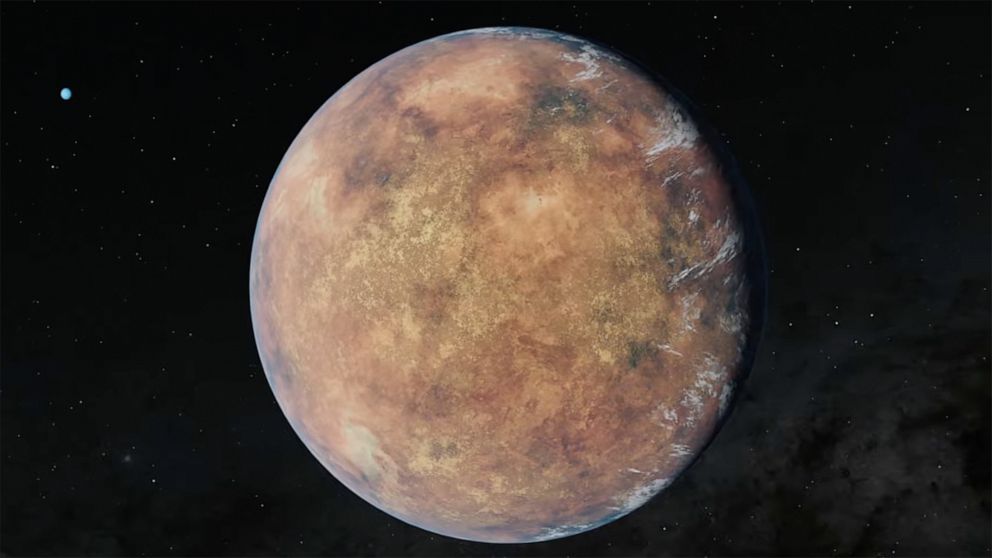Scientists from NASA announced Tuesday that they discovered an Earth-size planet orbiting its star's habitable zone.
Called TOI 700 e, the planet is part of the TOI 700 system and is 95% the Earth's size and likely rocky, according to NASA, which used data from its Transiting Exoplanet Survey Satellite (TESS).
"This is one of only a few systems with multiple, small, habitable-zone planets that we know of," Emily Gilbert, a postdoctoral fellow at NASA's Jet Propulsion Laboratory in Southern California who led the work, said in a statement on NASA's website.
NASA previously discovered three planets in the same system, called TOI 700 b, c and d. Planet d is also in the habitable zone of the star, NASA said.

NASA’s TESS discovers planetary system’s second sarth-size world seen in a NASA illustration.
NASA
"Planet e is about 10% smaller than planet d, so the system also shows how additional TESS observations help us find smaller and smaller worlds," Gilbert said.
Paul Hertz, a senior advisor to the Associate Administrator of the Science Mission Directorate, said in 2020 that "TESS was designed and launched specifically to find Earth-sized planets orbiting nearby stars."
TOI 700 e takes 28 days to orbit its star called TOI 700, a small red dwarf star located around 100 light-years from Earth.
In 2020, a New York teenager interning at NASA discovered a planet 6.9 times larger than Earth that orbited two stars, what scientists call a circumbinary planet.
NASA said the Wolf Cukier’s discovery was rare because circumbinary planets, which are usually difficult to find and scientists can only detect these planets during a transit event, when one of the suns shows a decrease in brightness.
ABC News' Ivan Pereira contributed to this report.
https://news.google.com/__i/rss/rd/articles/CBMiZmh0dHBzOi8vYWJjbmV3cy5nby5jb20vVVMvbmFzYS1zYXRlbGxpdGUtZGlzY292ZXJzLWVhcnRoLXNpemVkLXBsYW5ldC1oYWJpdGFibGUtem9uZS9zdG9yeT9pZD05NjM0MzE4ONIBamh0dHBzOi8vYWJjbmV3cy5nby5jb20vYW1wL1VTL25hc2Etc2F0ZWxsaXRlLWRpc2NvdmVycy1lYXJ0aC1zaXplZC1wbGFuZXQtaGFiaXRhYmxlLXpvbmUvc3Rvcnk_aWQ9OTYzNDMxODg?oc=5
2023-01-11 02:52:34Z
CBMiZmh0dHBzOi8vYWJjbmV3cy5nby5jb20vVVMvbmFzYS1zYXRlbGxpdGUtZGlzY292ZXJzLWVhcnRoLXNpemVkLXBsYW5ldC1oYWJpdGFibGUtem9uZS9zdG9yeT9pZD05NjM0MzE4ONIBamh0dHBzOi8vYWJjbmV3cy5nby5jb20vYW1wL1VTL25hc2Etc2F0ZWxsaXRlLWRpc2NvdmVycy1lYXJ0aC1zaXplZC1wbGFuZXQtaGFiaXRhYmxlLXpvbmUvc3Rvcnk_aWQ9OTYzNDMxODg
Bagikan Berita Ini
















0 Response to "NASA satellite discovers second Earth-sized planet in habitable zone - ABC News"
Post a Comment